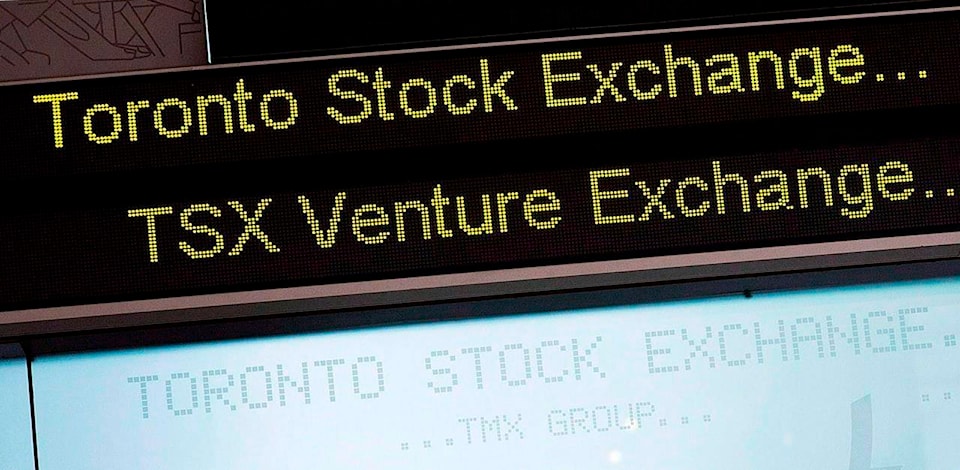TORONTO — North American stock markets fell Thursday on technology sector weakness and concerns about the likelihood of more U.S. stimulus and slowly falling jobless claims.
The S&;P/TSX composite index closed down 48.94 points to 16,246.72.
In New York, the Dow Jones industrial average was down 130.40 points at 27,901.98. The S&P 500 index was down 28.48 points at 3,357.01, while the Nasdaq composite was down 140.19 points at 10,910.28.
Technology stocks have surged in the past few months but valuations have become stretched, says Anish Chopra, managing director with Portfolio Management Corp.
“You’ve had such a great run in technology that at some point valuations become stretched and investors just say, ‘OK it’s time for some profit-taking and moving on,’ ” he said in an interview.
Facebook and Amazon were down 3.4 per cent and 2.5 per cent, respectively. Snowflake dropped 10.7 per cent a day after doubling in its Wednesday debut.
In Canada, Shopify Inc. closed nearly two per cent lower while Nuvei Corp. closed at US$33.67 in its initial day of trading as the Montreal payments company made history by raising US$700 million through an IPO, the largest amount by a technology company in TSX history. The price was well above the US$26 where they were priced and initial estimates of between US$20 and US$22.
In addition, weekly U.S. jobless claims have remained stubbornly high despite slowly decreasing. Another 860,000 workers applied for unemployment benefits last week, down just 24,000 from the prior week as the impact of COVID-19 lingers.
“The improvements were coming quickly earlier on, in the last few months, and now it seems like they’ve slowed.” Chopra said.
Markets initially welcomed the U.S. central bank’s comments on Wednesday that rock-bottom interest rates would remain through the end of 2023. But Fed chairman Jerome Powell’s comments failed to meet expectations that it would provide more generous stimulus.
Investors are also increasingly pessimistic that the U.S Congress will agree on a spending package for unemployment benefits and other stimulus measures that recently expired. Powell had urged additional fiscal measures.
“Now it looks like it’s a wait-and-see. Does the economy need more stimulus both fiscally and from a monetary point of view? It seems like things are just moving along and improving very slowly,” said Chopra.
The Canadian dollar traded for 75.76 cents US compared with 75.94 cents US on Wednesday.
Energy, technology and materials were the weakest performing sectors on the TSX.
Energy dropped 1.7 per cent with Vermilion Energy Inc. down 5.8 per cent, Canadian Natural Resources off 3.3 per cent and Husky Energy Inc. 2.8 per cent lower.
The decreases came as natural gas plunged while crude oil increased.
The October crude contract was up 83 cents at US$40.99 per barrel and the October natural gas contract was down 25 cents at US$2.02 per mmBTU.
Chopra said the sector is taking a longer-term view about the potential for a second wave of COVID-19 infections as the Northern Hemisphere gets into colder weather and the prospects for weaker energy demand.
“I think that’s negative over time for crude prices and negative for energy stocks and I think the energy stocks are starting to reflect that potential concern.”
Materials decreased about one per cent with Endeavour Mining Corp. off 4.6 per cent and Barrick Gold Corp. down 3.3 per cent.
This report by The Canadian Press was first published Sept. 17, 2020.
Companies in this story: (TSX:ABX, TSX:EDV, TSX:VET, TSX:CNQ, TSX:HSE, TSX:SHOP, TSX:GSPTSE, TSX:CADUSD=X)
Ross Marowits, The Canadian Press
